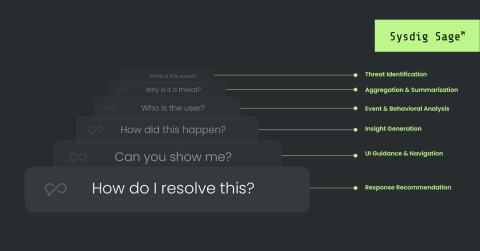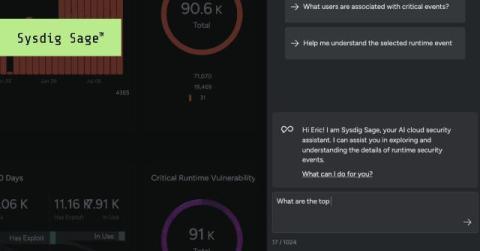Sysdig Sage: A groundbreaking AI security analyst
Generative AI (GenAI) is a top priority for organizations looking to increase productivity and solve business problems faster. In cloud security, AI chatbots to aid security practitioners are becoming more common, but to date, most of these solutions offer only basic queries and summarization. Diverse cloud environments and evolving threats require more from an AI security analyst.











